FOTO/INDUSTRIA does not profess to make any grand statements about its central theme, the built environment. Rather than serving some overarching perspective on the subject, the 11 eleven exhibitions each explore a different facet of it. “There are no answers but many questions,” says Francesco Zanot, the photography Biennial’s chief curator who conceived of the 2019 programme as a multifaceted reflection on the built environment and the medium of photography more broadly. “Our intention is to confront the topic from various points of view, highlighting its vastness rather than trying to solve it,” he continues, “so there are exhibitions that investigate its technological implications, historical, anthropological, philosophical, political, etc”.
Located in the northern Italian city of Bologna, FOTO/INDUSTRIA is the first biennial dedicated to industry and work. It is produced by MAST Foundation, a non-profit organisation associated with the industrial group Coesia. Founded in 2013, the three previous editions of the festival were curated by the former director of Les Rencontres d’Arles François Hèbel, with Zanot taking over for the fourth and current iteration, which runs until 24 November 2019. Zanot’s programme refuses to be constrained by the visual cliches associated with the theme. “There were a number of stereotypes that we had to confront,” he says. “When it comes to the topics of work and industry, the image of the factory, with brick walls and chimneys, immediately springs to mind”.
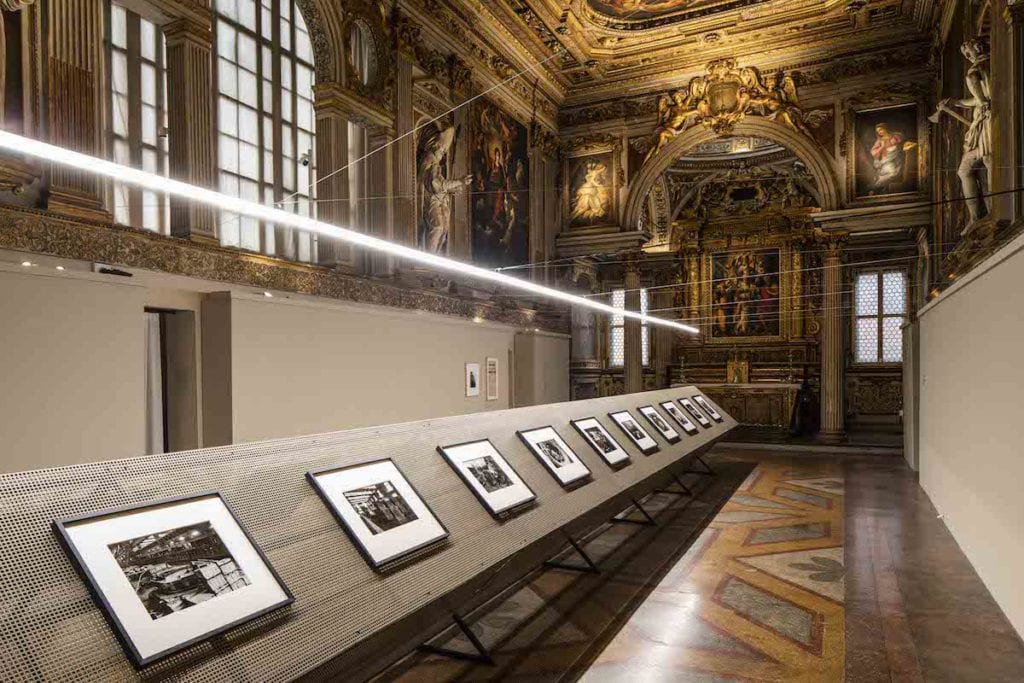
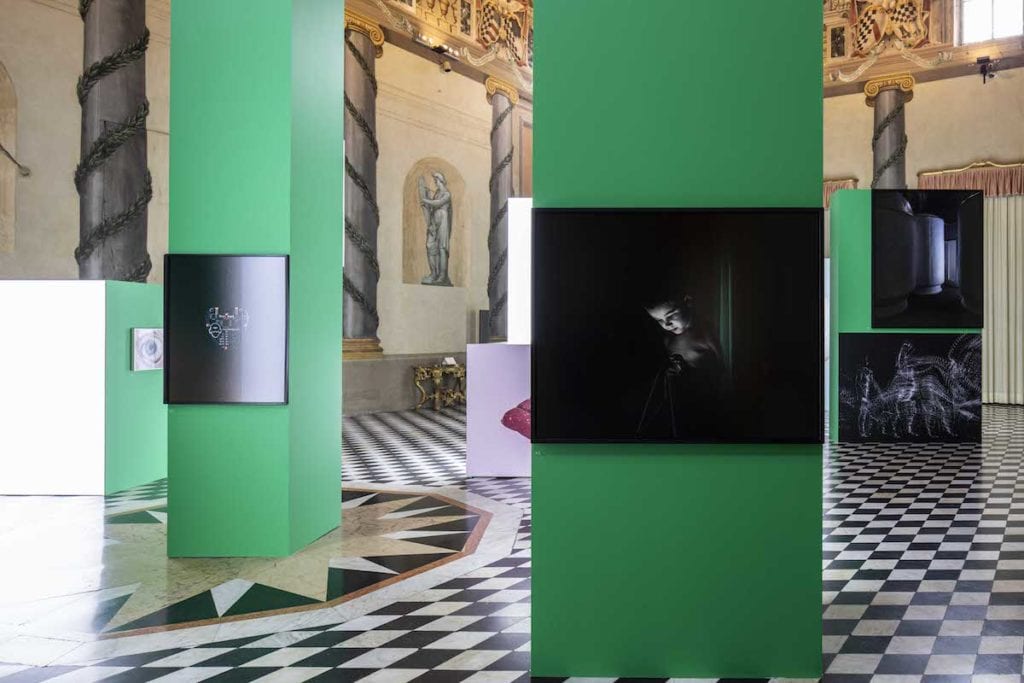
Instead, the Biennial endeavours to expand our perception of the built environment and photography’s role in visualising it. Spread throughout the city centre, aside from one located at MAST, the 11 exhibitions occupy distinct spaces designed by Milan-based Francesco Librizzi studio — from the ornate interiors of frescoed churches and the cavernous rooms of palazzos to the University of Bologna’s ancient reading room and an area in the city’s Museum of Modern Art (MAMbo). “We employed the spaces as a starting point for planning the installations,” explains Zanot. “We wanted there to be a perfect integration between container and content.” Collectively, the exhibitions facilitate a journey through the city: “Viewers must discover artists, artworks and places simultaneously. Each exhibition is an experience.”
The past, present, and future of the built environment and industry are explored through the work of photographers spanning the history of the medium. 70 prints by Albert Renger-Patzsch, one of the pioneers of the new objectivity movement, are on display at the Pinacoteca Nazionale. Paesaggi della Ruhr captures the shifting landscapes of the Ruhr district, the largest urban area in Germany, from the 1920s to the mid-1930s. During the 20s, the steel and coal industries consumed the rural terrain and Renger-Patzch crystallised the transformation in his black-and-white images. The photographs are devoid of humans, rather they create harmonious compositions from emblems of industry — railways, wasteland, slag heaps, rubbish tips, miners’ houses, and tenement blocks. “They are crucial images to investigate the built environment: they represent the archetype of industry, which in turn constitutes the apotheosis of the human gesture of making,” explains Zanot. “It is an inevitable passage. But, it is also very important to move on.”
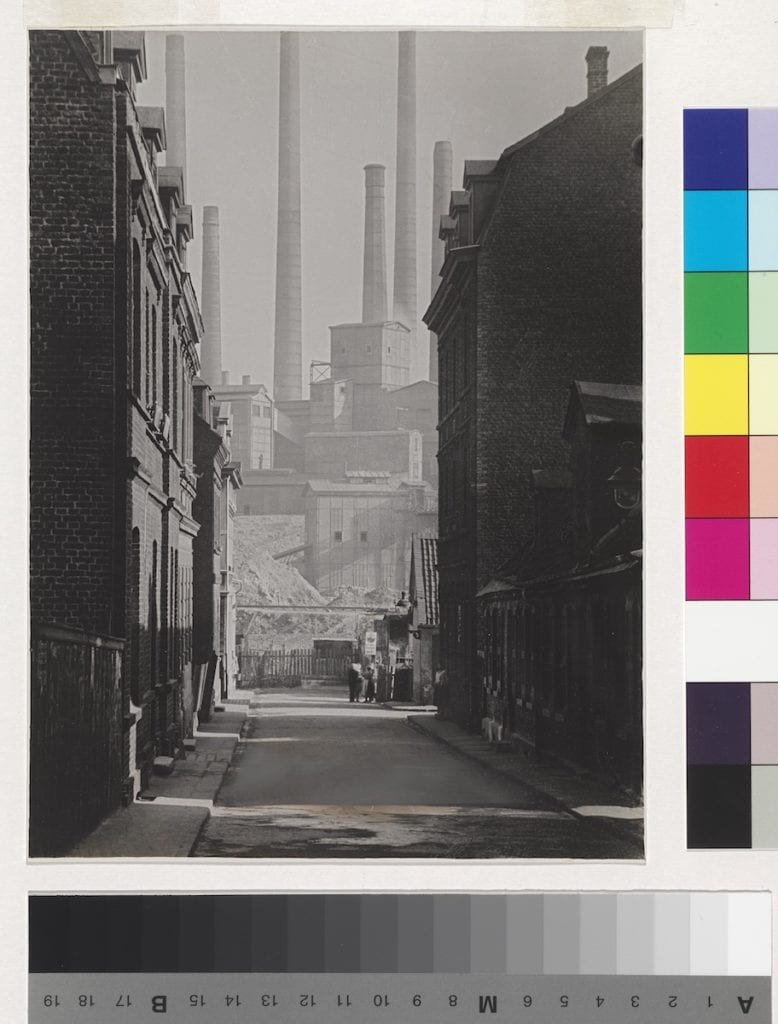
“There are no answers but many questions”
Francesco Zanot
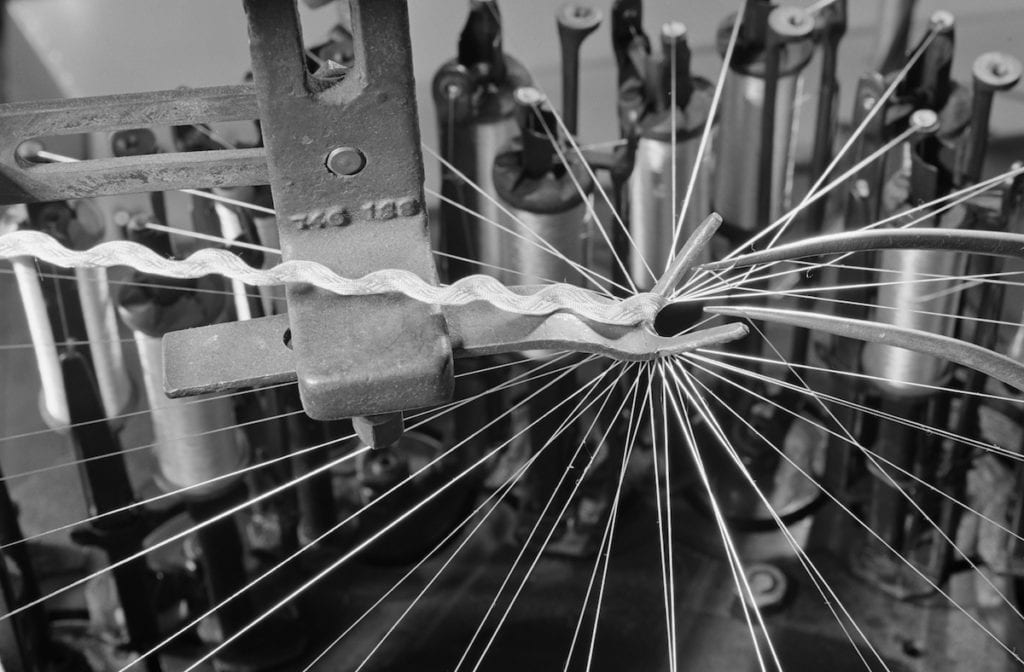
Renger-Patzch’s series depicts industry as one may conventionally conceive of it; photographically, the images are fairly traditional. Parallels can be drawn with work by André Kertész, exhibited at the Casa Saraceni, and aesthetically, that of Lisetta Carmi displayed in the Church of Santa Maria Della Vita. Kertész, who is best known for his photojournalism, completed several commercial commissions documenting New York City’s harbour and factory interiors across America between 1938 and 1944, selects of which are on show. Carmi’s series Porto Di Genova, which she began in 1965, exposes the harsh conditions endured by the port of Genoa’s workers. All three employ a black-and-white documentary style, but where Renger-Patzch and Kertész observe, Carmi exploits the medium to uncover social issues.
“Industries today are quite different, so it is necessary to build new imagery strong enough to replace the previous stereotype,” says Zanot, going on to explain that the biennial also includes a series of clues and visions about the future. Both Matthieu Gafsou’s H+, on display at the Palazzo Pepoli, and Yosuke Bandai’s A Certain Collector B, exhibited at the Biblioteca Della Musica, contribute to this. A Certain Collector B comprises 70 images, suspended on a sinuous white structure beneath a frescoed ceiling, which depict objects that Bandai found lying in the street — pieces of plastic, the remains of insects, rubbish, and more. The artist arranged the debris into harmonious compositions, which he scanned to create photographic prints, thereby immortalising the arrangements depicted. Gafsou’s series, displayed on coloured podiums within the baroque interiors of the Palazzo Pepoli, explores transhumanism — a philosophical movement focused on the transformation of the human condition through the elimination of its weaknesses.
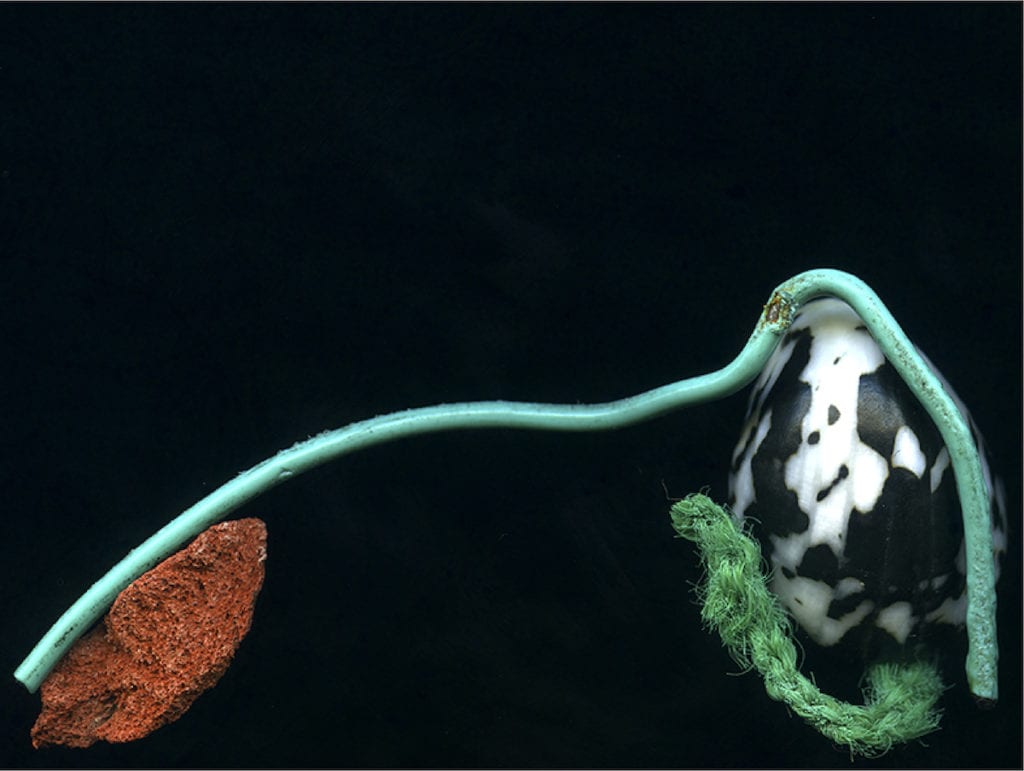
“There were a number of stereotypes that we had to confront. When it comes to the topics of work and industry, the image of the factory, with brick walls and chimneys, immediately springs to mind”
Francesco Zanot
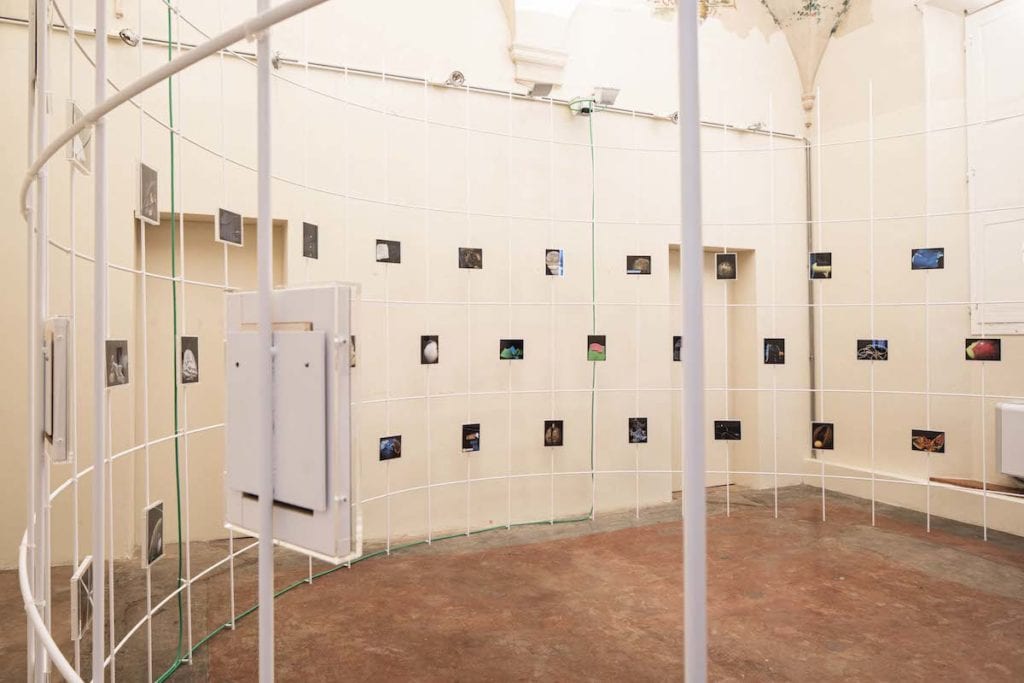
Elsewhere, Luigi Ghirri’s poetic depictions of industry, created on four separate commissions for Ferrari, Costa Crociere, Bulgari and Marazzi (all completed between 1970 and 1990), occupy the Palazzo Bentivoglio; Armin Linke’s investigative and multimedia project, Prospecting Oceans, explores and exposes the entanglement of industry, science, politics and economics involved in ocean excavations. Délio Jasse presents three series in the Palazzo Paltroni: Sem Valor, Arquivo Urbano, and Darkroom all employ pre-existing images from the artist’s archive, which he has modified to address issues across his home country, Angola. Stephanie Syjuco’s Spectral City, which emulates the Miles Brother’s silent film A Trip Down Market Street but employs Google Earth software to allude to the environmental and social changes that have altered San Francisco’s centre, takes over a room in MAMbo. And David Claerbout’s Olympia, a video installation that employs game-engine software to chart the decay of a computer-generated replica of the Olympic stadium, Berlin, over a 1000 years, is exhibited at Spazio Carbonesi.
Finally, within the light and translucent structure of MAST, the critical issue of the climate crisis, and its relationship to the built environment, is dealt with in a monumental show spanning two floors of the exhibition space. Anthropocene, curated by Urs Stahel, comprises work by Edward Burtynsky, and the filmmakers Jennifer Baichwal and Nicholas de Pencier who employed the research of the Anthropocene Working Group scientists to shape their exploration of the subject. MAST advocates an alternate model of corporate welfare and has positioned itself as an independent art institution coordinating a program of events and exhibitions for the adjoining factory’s employees and the wider community. It privileges openness and accessibility and this is felt in the show, which is educational in its employment of multiple wall texts to explain and contextualise the various exhibits.
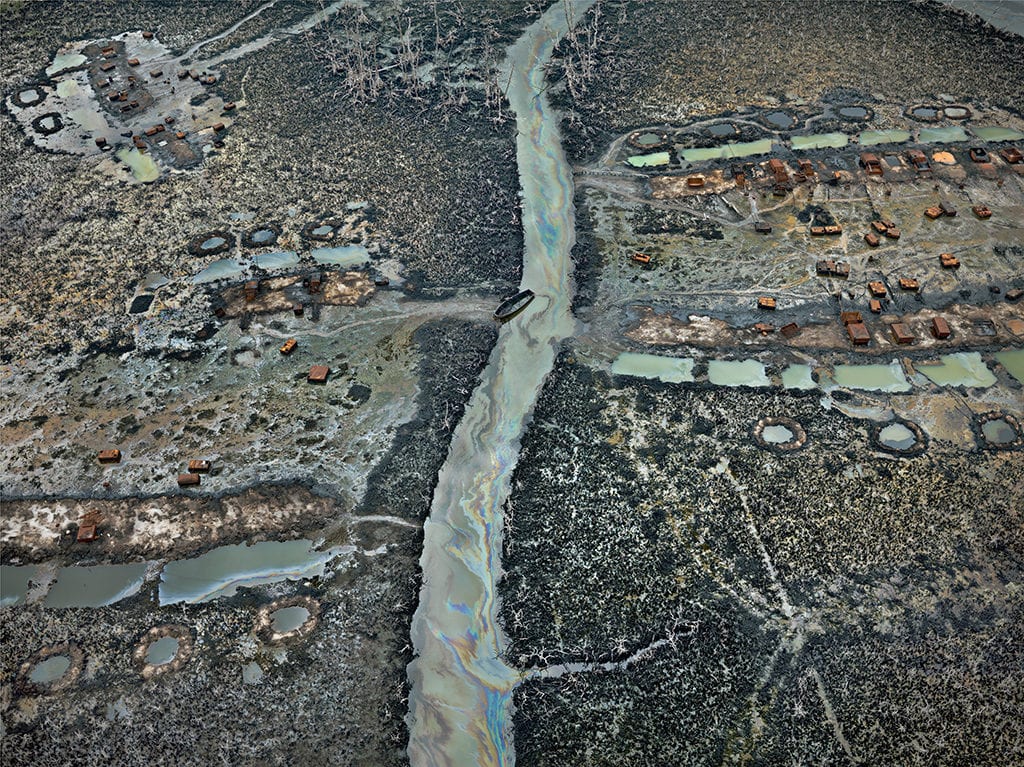
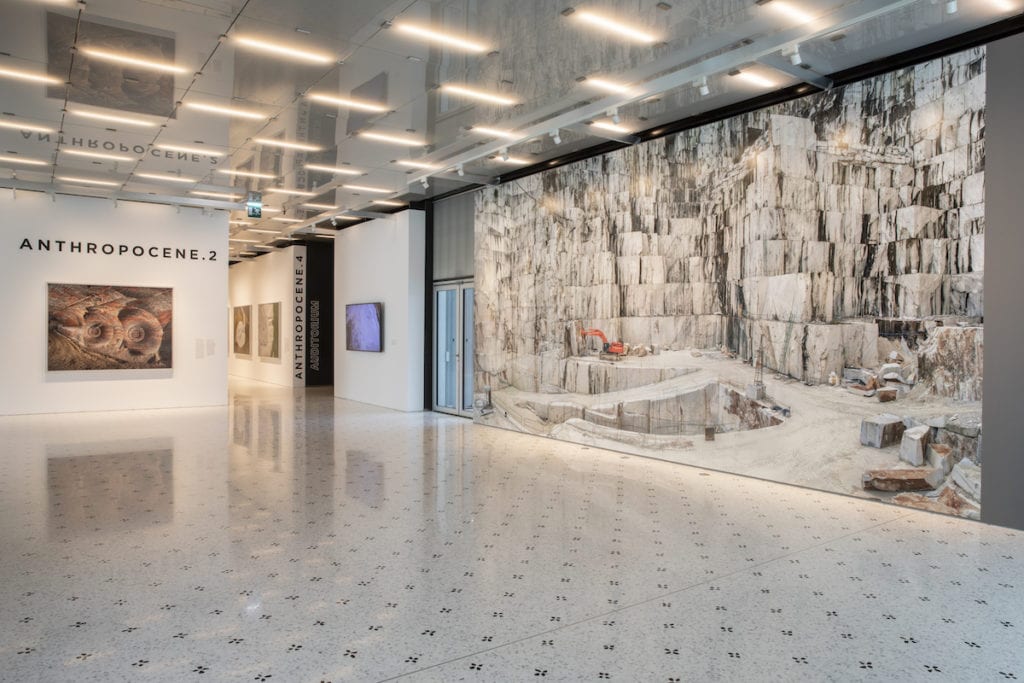
“We felt we had to do this exhibition because it shows a lot of the effects that western industrialisation has inflicted upon the world,” says Stahel. Burtynsky’s arresting images displayed as large-scale prints and murals, and the accompanying films, explore what is a largely abstract concept. The term Anthropocene was coined in 2000 by Paul J. Crutzen and Eugene Stoermer to denote the proposition that we have entered a geological epoch in which humans are the primary cause of irreversible planetary change. In contrast to the media’s widespread reliance on sensationalistic images, the show presents a studied and informative insight into the cause and effects of environmental degradation, enabling viewers to develop informed perspectives on the situation. At FOTO/INDUSTRIA Anthropocene provides a timely reflection on contemporary issues associated with industry and the built environment and photography’s power in exposing them.
FOTO/INDUSTRIA is on show across Bologna, Italy, until 24 November 2019. Anthropocene is on show at MAST Foundation until 05 January 2020.
